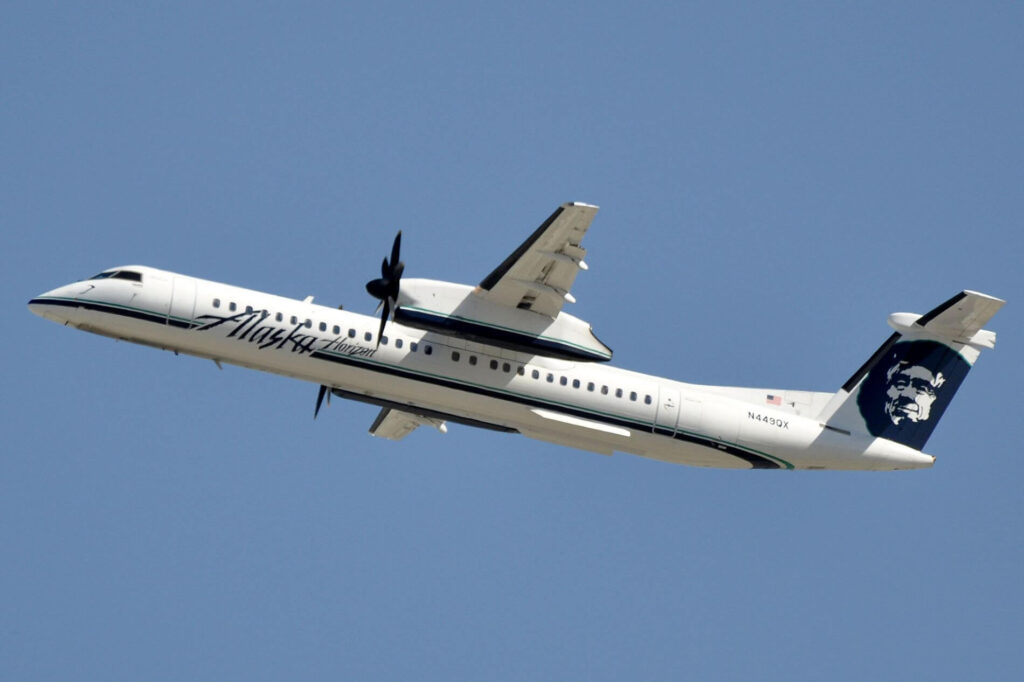August 10, 2018, saw an unscheduled and tragic airshow above Seattle: a Bombardier Dash 8 Q400, followed by two US Air Force F-15s, performed a number or daring maneuvers before crashing in a scarcely-populated area. The aircraft was stolen by an aircraft technician, raising an important question: how did it happen, and more crucially, how to prevent that from happening again?
Although the event initially caused a lot of speculation, the causes, perpetrator’s motivation and the technical details eventually became clear. 29-year-old Richard Russel had no pilot training, but was well versed in engine startup routine to perform regular checkups and honed his flying skills while playing aircraft simulators on his computer.
It was a stroke of unlikely luck that a random person, who followed a number of easy steps and ended up at the controls of a twenty-ton high-speed projectile over a major populated area, did not have any intent to harm other people, and was content with amusing himself with some aerial maneuvers before committing suicide
Such luck was not always there. Aircraft hijackings by personnel have happened before, the most tragic examples being Germanwings flight 9525 and, possibly, the Malaysia Airlines Flight MH370. In many cases, the pilot’s intention is to steer away and crash the aircraft. With the exception of the heist of Angola Airlines Boeing 727 in 2003, the stolen aircraft was always already in the air, and the idea of a simple technician performing such an act was simply never considered.
Proposed changes
The initial shock caused by the incident rapidly transformed into a call for changes. A number of them were proposed, one being the installation of mechanical systems preventing unverified personnel from accessing the aircraft. Alaska Airlines CEO Brad Tilden, when inquired about such a system by The Washington Post in the aftermath of the crash, simply declined to comment. It is clear that technicians, especially those who are authorized to perform engine runs, cannot be easily “locked out” of the aircraft.
Another proposition was to electronically restrict aircraft’s controls. Alan Stolzer, safety expert at the College of Aviation at Embry-Riddle Aeronautical Academy, aired this idea in an interview to Wired. According to him, the computer could lock the controls outside of operational times, preventing even authorized employees from hijacking the plane.
But numerous reports and recommendations that resulted from an investigation do not mention this option. Naturally, it would require a lot of cooperation between aircraft manufacturers, airports and airlines who own the airplanes, and serious commitment from all of these parties, not mentioning investments required to upgrade software and hardware for thousands of aircraft.
Such a move can not be considered likely, especially seeing that it would do nothing to prevent the more visible and common kind of aircraft hijackings, those performed by pilots or passengers mid-flight.
The only remaining option, discussed at length in the aftermath of the crash, was improved background checks and psychological testing for all personnel involved in aircraft operations. The Aviation Employee Screening and Security Enhancement Act was approved by the US House majority in 2017, a year before the Seattle incident. The Act called for improvement of various airport security systems, but also increased cooperation between law enforcement agencies and airports in an attempt to prevent people, who could constitute an insider threat, from being granted a job in the industry.
The House passed the bill, which was received by the Senate and reviewed by the appropriate committee, after which nothing happened for three years now. It is unknown if – and when – the Senate, whose approval the Act has to undergo, will vote on it. Even more unclear is whether the changes, introduced by the Act, could prevent something like the Seattle heist to happen again. Richard Russel had neither a history of criminal actions, nor easily identifiable suicidal intent. His interactions with an air traffic control show him displaying elevated, if not playful mood.
So, what happened since the incident, besides a simple understanding that such a tragedy can happen and is not easily preventable? On both national and international levels – largely nothing. Seattle-Tacoma International Airport (SEA), from which the doomed Q400 took off, was the only one to react. According to the spokesperson Perry Cooper, interviewed by KomoNews a year after the incident, “dozens of changes” recommended by after-action reports were implemented, ranging from improved security access to additional mental health services.
Alaska Airlines did not respond to similar inquiries and reactions from other airports and airlines are non-existent. A notion that there is one airport in the world that learned something from a two-year-old disaster may be calming for some, but there is no tranquility in the notion that no one else did.

